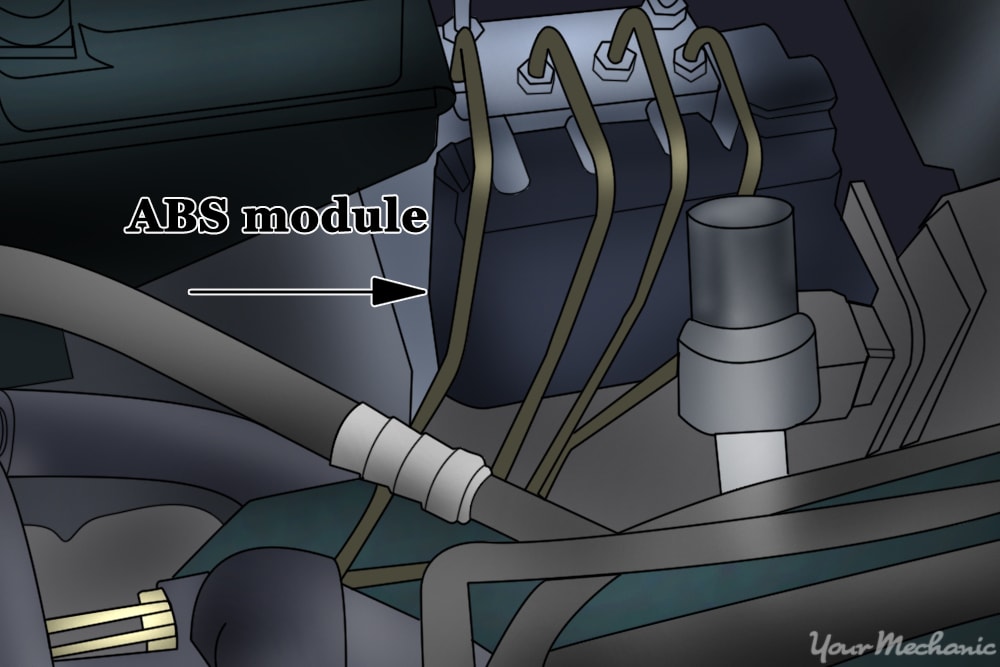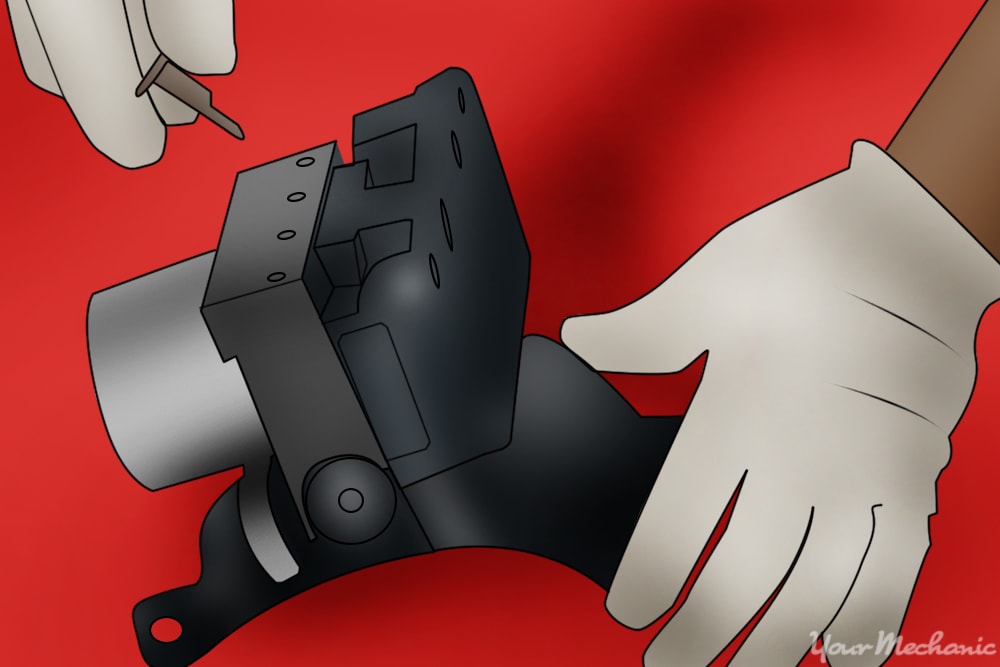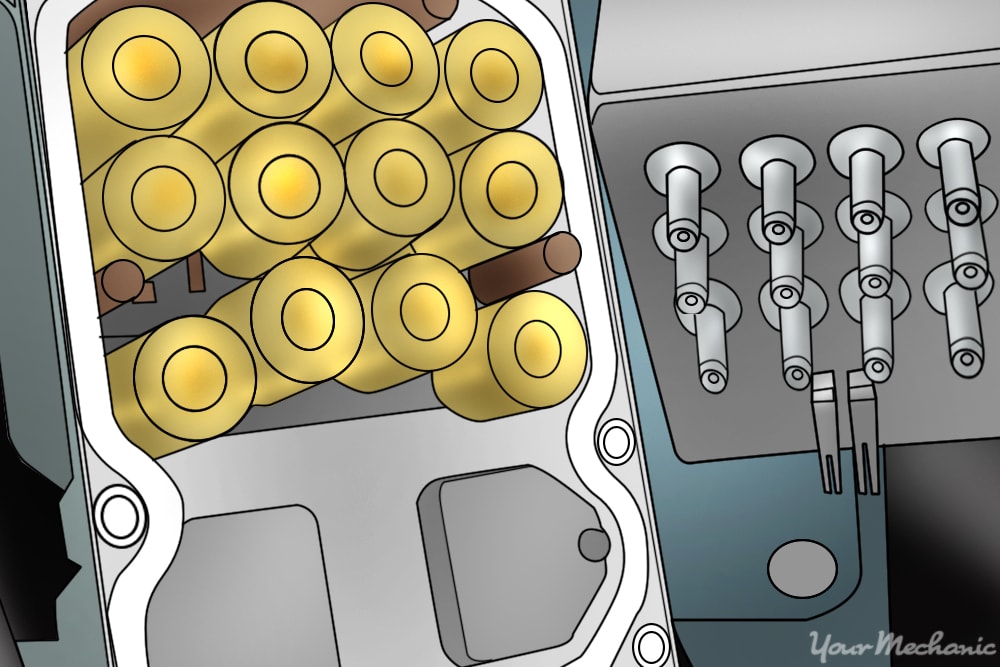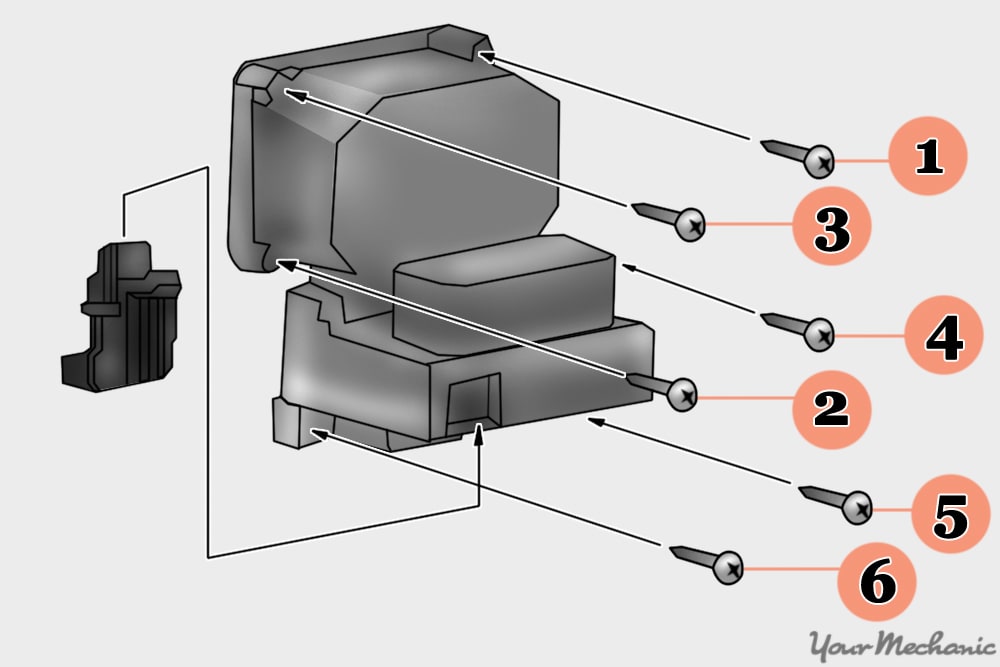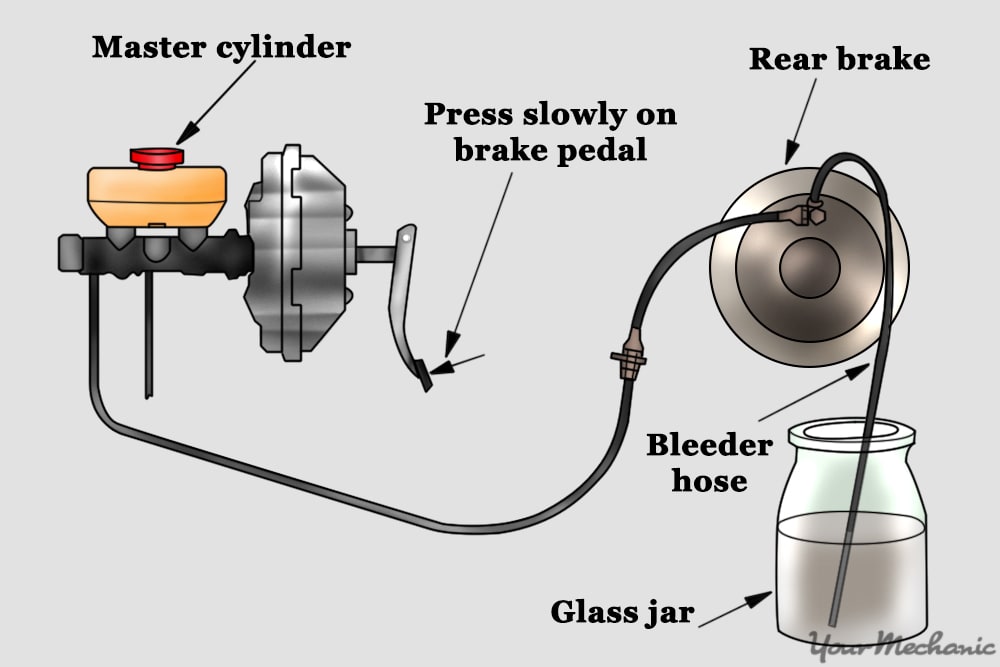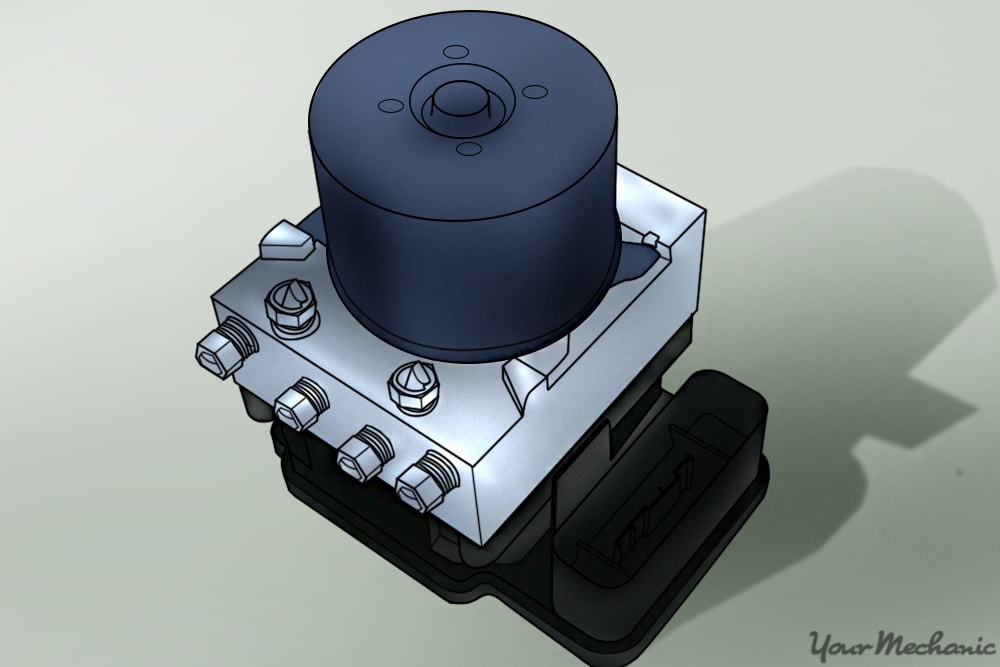

An ABS module consists of three components — the electrical module with electrical solenoids, the brake line block, and the pump motor that builds pressures in the brake lines to be used during ABS braking situations.
An ABS module replacementcan be a daunting procedure. This module is a menacing looking device with warnings displayed all over it. There are high pressures in the brake lines that should be respected if you find you have to remove them.
- Note: Not all ABS modules require the brake lines to be removed. This depends on the manufacturer of the car you are working on. Other than the removal of the brake lines, the procedures for replacing an ABS module are virtually the same.
The ABS module will need to be programmed once everything is installed. This procedure also will vary quite a bit depending on the manufacturer.
- Tip: For this step in the ABS control module replacement procedure, refer to the manufacturer's instructions to find the specific programming procedure.
Sometimes, the ABS module will be replaced along with the solenoid block and other times it will not. This is dependent on the design and location of the ABS unit which is based on the manufacturer’s design, build choices, and how the replacement ABS module is sold. The lifespan of an ABS control module varies depending on what the vehicle is. This step-by-step guide will teach you everything you need to know on how to replace an ABS module.
Part 1 of 6: Where is the ABS Module?
Materials Needed
- Line wrenches
- Ratchet
- Scan Tool
- Socket set
- [Ratchet](https://www.amazon.com/gp/product/B00004TBL1/ref=as_li_tl?ie=UTF8&tag=yourme-20&camp=1789&creative=9325&linkCode=as2&creativeASIN=B00004TBL1&linkId=1a46dd084445d31f71d8573163c8ac0e
Step 1: Use Your Manual to Locate the ABS Module
An ABS control module replacement can be very tricky, so it’s important to use your vehicle's manual to know exactly what you’re looking for and where to find it. Usually, the repair manual will have a drawing with an arrow pointing at the area where the ABS module is mounted.
At times, there will also be a written description that can be very useful.
- Tip: The ABS module has many metal brake lines connected to it. The module itself is bolted to the solenoid block and will need to be separated from it. This isn’t always the case as some manufacturers will require the module and the solenoid block to be replaced simultaneously.
Step 2: Find the Module on the Car
You may need to lift the vehicle and remove some plastic covers, panels or other components to locate the ABS module.
- Note: Remember the ABS module will be bolted to a solenoid block that has many brake lines connected to it.
Part 2 of 6: Determine How to Remove the ABS Unit
Step 1: Refer to the Manufacturer’s Repair Instructions
You may be able to remove the ABS module from the vehicle as a complete unit or remove only the electrical module while the solenoid block remains attached to the vehicle.
- Tip: On some vehicles, you can get away with removing the ABS module from the solenoid block while the solenoid block is still bolted to the car. Other vehicles may require the two components to be replaced as a unit. This is dependent on how well you can access it and how the new module is sold.
Step 2: Move Onto Part 3 or Part 4
The next steps to take are based on what your manufacturer's instruction manual says.
If the ABS module, solenoid block, and the motor will be removed as a complete unit, move onto Part 3.
If you only need to remove the module and not the solenoid block and motor, move onto Part 4.
Part 3 of 6: Remove the Module and Solenoid Block
Step 1: Release Brake Line Pressure
Some vehicles will have high pressure contained within the ABS unit. If this is the case with your vehicle, refer to the specific repair manual for your car to determine the correct methods for releasing the line pressure.
Step 2: Disconnect Electrical Connector from Module
The connector will be large and have a retaining mechanism. Each manufacturer uses different mechanisms to retain connectors.
- Tip: Be sure to mark the lines before removing them to ensure that you can reconnect them in their original positions.
Step 3: Remove Brake Lines from Module
You will need the appropriate size line wrench to remove the lines without rounding them. Once you have completely unthreaded all the lines from the block, pull up on them to remove them.
Step 4: Remove ABS Module with Solenoid Block
Unbolt whatever bracket or bolts are used to mount the ABS module and solenoid block to the car. This configuration will greatly depend on the make and model of car you are working on.
Step 5: Remove ABS Module from Solenoid Block
Remove the bolts that attach the module to the solenoid block. Gently pry the module from the block. This may require the use of a flat head screwdriver. Be sure to be gentle and patient.
- Note: The removal of the module from the solenoid block is not always necessary as it depends on how the new unit is supplied to you. Sometimes, it is sold as a complete unit with solenoid block, module, and motor. Other times, it will be just the module.
Step 6: Skip to Part 6
Skip part 4 as it is for module replacement that doesn’t require the removal of the solenoid block and brake lines.
Part 4 of 6: Remove Only the Module
Step 1: Disconnect Electrical Connector from Module
The connector will be large and have a retaining mechanism. Each manufacturer uses different mechanisms to retain this connector.
Step 2: Remove the Module
Remove the bolts that attach the module to the solenoid block. Gently pry the module from the block. This may require the use of a flat head screwdriver. Be sure to be gentle and patient.
Part 5 of 6: Install the New ABS Module
Step 1: Install the Module Onto the Solenoid Block
Gently guide the module onto the solenoid block.
Do not force it, if it isn’t sliding on smoothly, remove it and take a close look at what is going on.
Step 2: Start Threading Bolts by Hand
Before tightening any of the bolts, start threading them by hand. Ensure that they are snug before applying the final torque.
Step 3: Connect the Electrical Connector
Push the electrical connector on. Use the locking mechanism to firmly attach and secure it to the module.
Step 4: Program the New Module to the Car
This procedure is dependent on the manufacturer of your vehicle and often isn’t necessary. Refer to your manufacturer’s repair manual for the instructions to program this module. If you happen to need to program the new module, failure to do so will result in a failed ABS module replacement.
Part 6 of 6: Install the ABS Unit Onto the Car
Step 1: Install Module to the Solenoid Block
This step is only necessary if the new module is supplied separately from the solenoid block.
Step 2: Install the ABS Unit Onto the Car
Bolt the unit to the car as necessary. Be sure to consider the alignment of the brake lines.
Step 3: Start Threads of the Brake Lines
Cross threading of the brake lines is a very real possibility that can lead to major problems. Be sure to gently start each brake line by hand before using a wrench or applying the final torque.
Step 4: Torque All the Brake Lines
Make sure all the brake lines are tight and the flare end is firmly seated as you tighten the brake lines. Sometimes, this can be an issue. If it is, you will need to remove the leaking brake line and take a closer look at the flared end.
Step 5: Connect the Electrical Connector
Push the electrical connector on. Use the locking mechanism to firmly attach and secure it to the module.
Step 6: Program the New Module to the Car
This procedure will be dependent on the manufacturer of your vehicle and often isn’t necessary. You will need to refer to your manufacturer’s repair manual to find the instructions for this process.
Step 7: Bleed the Brake Lines
Most of the time, you can bleed the brake lines at the wheels.
Some vehicles will have elaborate bleeding procedures that will need to be followed. Refer to your manufacturer’s repair manual for specific instructions.
An ABS control module replacement is a varied repair — on some vehicles, it can be very straightforward and simple while it is arduous and complicated on others. The complications can occur in the programming to the vehicle, the bleeding procedures, or the installation in cases where all the brake lines need to be removed.
Sometimes, the module is mounted in spots that require the removal of other components in order to access the ABS unit. Since brake systems span from the front to the rear of the car and on both sides, an ABS unit can be installed almost anywhere on a car. If you're lucky, it will be easily accessible and you will need to replace only the electrical portion of the ABS unit instead of having to do extensive disassembly, programming, and bleeding.
If your ABS light is on, you should always begin with a thorough diagnosis of the ABS system before replacing an ABS module as ABS modules are expensive and complicated. Get a certified technician from YourMechanic to perform an inspection diagnose the problem.



